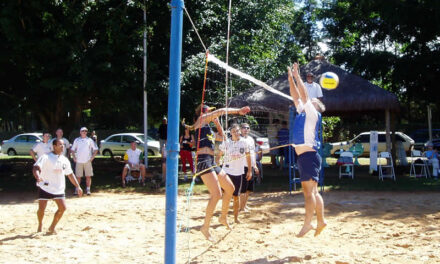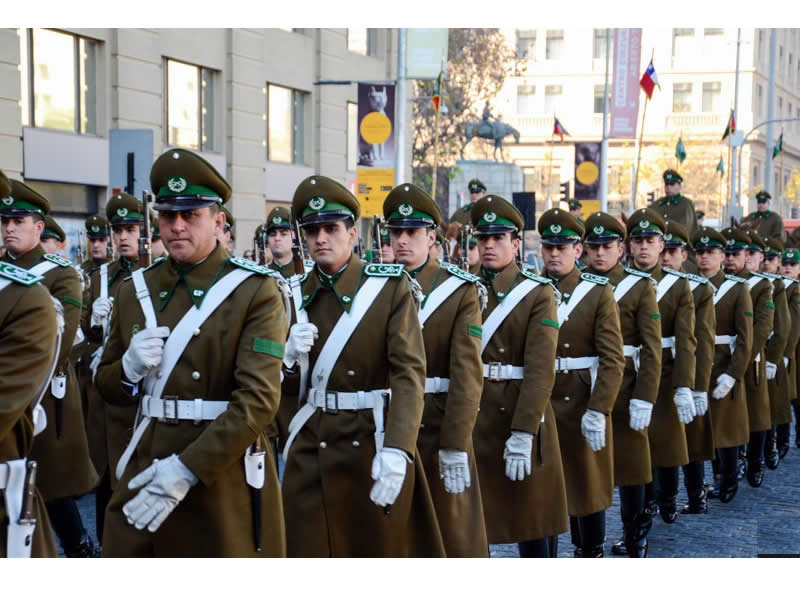Chile’s Carabineros Day is celebrated on April 27th each year, marking the official establishment of this police institution in 1927. The choice of this specific date commemorates the publication of Decree-Law No. 2,484, signed by then-President Carlos Ibáñez del Campo, which unified the country’s various police forces into a single, structured organization with a military character.
The origins of the Carabineros trace back to the 19th century, when the first police corps began forming in Chile. In 1903, the Carabineros Regiment was created, specializing in rural patrols. However, it was the 1927 reform that gave the institution its current form, transforming it into a national police force with a hierarchical structure and military discipline.
Throughout its history, the Carabineros have expanded their presence across all of Chile, from bustling cities to the remote regions of the Atacama Desert and Patagonia. A defining moment occurred in 2006, when then-Director General José Alejandro Bernales died in a plane crash—an event that deeply moved the nation and highlighted the institution’s vital role.
With the motto “Order and Homeland,” the Carabineros not only maintain public security but also engage in important community and preventive work, such as the well-known Plan Cuadrante. Although the institution has faced periods of scrutiny—particularly during the military government (1973–1990)—it remains a pillar of national security.
Celebrations on April 27th include official ceremonies, parades, and various tributes to the institution’s members. More than just a date on the calendar, this day represents recognition of the dedicated work of generations of Carabineros who have served Chile—often at great personal sacrifice—to uphold order and protect citizens across the nation.
Português
O Dia dos Carabineiros do Chile é comemorado em 27 de abril de cada ano, data que recorda a criação oficial desta instituição policial em 1927. A escolha deste dia específico se deve à publicação do Decreto-Lei Nº 2.484, assinado pelo então presidente Carlos Ibáñez del Campo, que unificou as diferentes forças policiais existentes no país em uma única organização estruturada e de caráter militar.
As origens dos Carabineiros remontam ao século XIX, quando começaram a se formar os primeiros corpos policiais no Chile. Em 1903 foi criado o Regimento de Carabineiros, especializado no patrulhamento de zonas rurais. Porém, foi a reforma de 1927 que deu à instituição sua forma atual, transformando-a em uma polícia nacional com estrutura hierárquica e disciplina militar.
Ao longo de sua história, os Carabineiros expandiram sua atuação por todo o território chileno, desde as movimentadas cidades até as regiões mais remotas do deserto do Atacama e da Patagônia. Um momento marcante ocorreu em 2006, quando o então diretor-geral, general José Alejandro Bernales, faleceu em um acidente aéreo, evento que gerou grande comoção nacional e destacou a importância do trabalho da instituição.
Com o lema “Ordem e Pátria”, os Carabineiros não só mantêm a segurança pública, mas também desenvolvem importantes trabalhos comunitários e de prevenção, como o conhecido Plano Cuadrante. Embora tenha enfrentado períodos de questionamento, especialmente durante o governo militar (1973-1990), a instituição segue sendo um pilar da segurança nacional.
As comemorações do dia 27 de abril incluem cerimônias oficiais, desfiles e diversas homenagens aos membros da instituição. Mais do que uma simples data no calendário, este dia representa o reconhecimento ao trabalho dedicado de gerações de carabineiros que serviram ao Chile, muitas vezes com grande sacrifício pessoal, para manter a ordem e proteger os cidadãos em todo o território nacional.



















